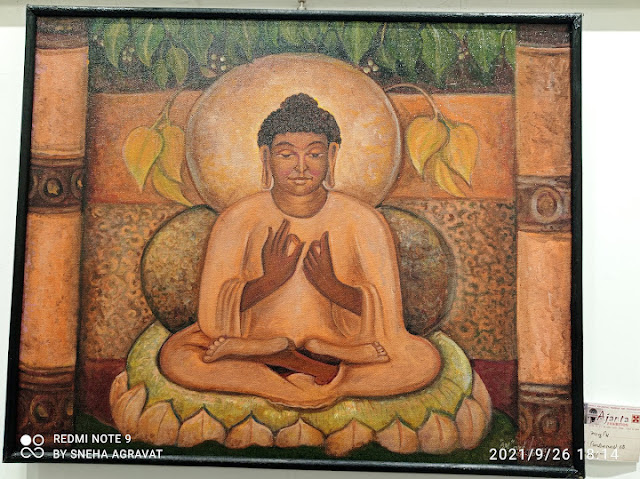Ajanta Exhibition
Inspiration exists, but it has to find you working ― Pablo Picasso
Of the 30 caves at Ajanta, four are chaityagrihas or prayer halls typified with colonnades and a stupa at the rear end. The above at Cave 26 is one of the finest with Buddha seated under a pavilion in the pralambha-pada [hanging legs] pose.Who constructed ajanta caves?
20 caves were built during the Vakataka dynasty, during the reign of Harisena, and at the end of his reign, these caves were abandoned. Inside the caves, you can see paintings depicting the life of Gautam Buddha, and also stories from Jataka Tales.
 |
Jakata tales
Thematically walls of the caves have Jataka Tales that tell the stories of Bodhisattva painted on them. Bodhisattvas are the earlier Buddhas on the path to becoming a Buddha, not yet Buddha but still carrying some traits of Buddha. There are 550 or so tales and some of them can be seen painted and sculpted at all Buddhist sites. Other than Jataka tales, the Bodhisattvas and Buddha are also painted on the walls. Bodhisattvas can be any species – elephant, monkey, snake, swan or a human being though it is never a female.
(Padmapani)
This is Bodhisattva Padmapani – literally meaning the one holding the Padma or a lotus flower in his hand.
Spink's chronology and cave history
Walter M. Spink
was an American art historian who was best known for his extensive study of Buddhist art in India, particularly the Ajanta Caves, a UNESCO World Heritage Site. About his work on the Ajanta caves, scholars have acknowledged that his ideas "revolutionized the history of the site".He was a professor of art history at the University of Michigan, Ann Arbor.











Too much informative blog!👌
ReplyDelete⭐️ ⭐️ ⭐️ ⭐️ 🌟 💫
ReplyDeleteIt's really nice and helpful for projects.....
ReplyDelete